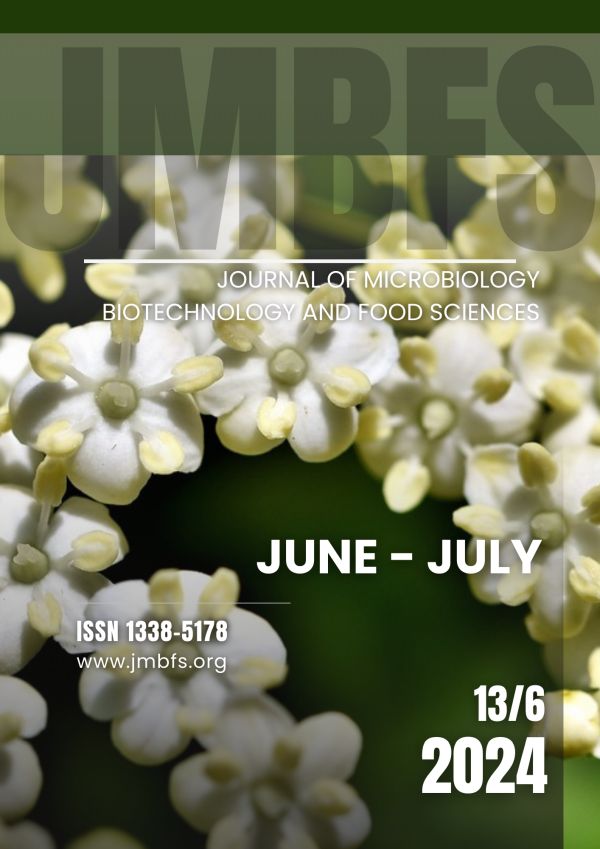ENHANCING CELLULASE PRODUCTION VIA RESPONSE SURFACE METHODOLOGY FROM CLADOSPORIUM SP.: FRUIT WASTE ADDITION IMPACT
DOI:
https://doi.org/10.55251/jmbfs.11117Keywords:
Watermelon juice, Lemon peel powder, Cladosporium sp., Box-Behnken design, Cellulase production, Solid state fermentationAbstract
Accumulating organic waste stands as a significant challenge in developing nations. Researchers have extensively studied and utilized sugarcane bagasse fiber residues to produce various compounds. Cladosporium sp. NCIM 901 employs peracetic acid (PAA) treated bagasse in solid substrate fermentation (SSF) to generate cellulase enzyme. We utilized a Box-Behnken Design (BBD) to investigate how the fermentation medium components - watermelon juice, lemon peel powder, KH2PO4, (NH4)2SO4, and MgSO4 - affect the synthesis of Filter Paperase (FPase), Carboxymethyl cellulase (CMCase), and β-glucosidase enzymes. Under the enhanced conditions, the trial exhibited β-glucosidase, CMCase, and FPase activities of 18.6, 19.4, and 17.6 U/gds, respectively. The model calculated R2 values ranging between 91.2–91.4%, suggesting their suitability and potentially usable for estimating the level of culture medium variables needed to achieve optimal enzyme generation by the fungal strain Cladosporium sp. Observations confirm that supplementing lemon peel powder and watermelon juice with MgSO4 enhances enzyme production. The findings of model validation revealed high consistency between the observed experimental and anticipated outcomes. In the simultaneous saccharification and fermentation (SsF) process, the processed bagasse yielded more ethanol (26 g/L) compared to the untreated substrate. Based on the result, it can be conclude that, fruit processing wastes are useful for increasing cellulase enzyme production by fungi under solid state fermentation.
Downloads
Downloads
Published
How to Cite
Issue
Section
License
Copyright (c) 2023 Rama Mohan Poludasu

This work is licensed under a Creative Commons Attribution 4.0 International License.
All papers published in the Journal of Microbiology, Biotechnology and Food Sciences are published under a CC-BY licence (CC-BY 4.0). Published materials can be shared (copy and redistribute the material in any medium or format) and adapted (remix, transform, and build upon the material for any purpose, even commercially) with specifying the author(s).





